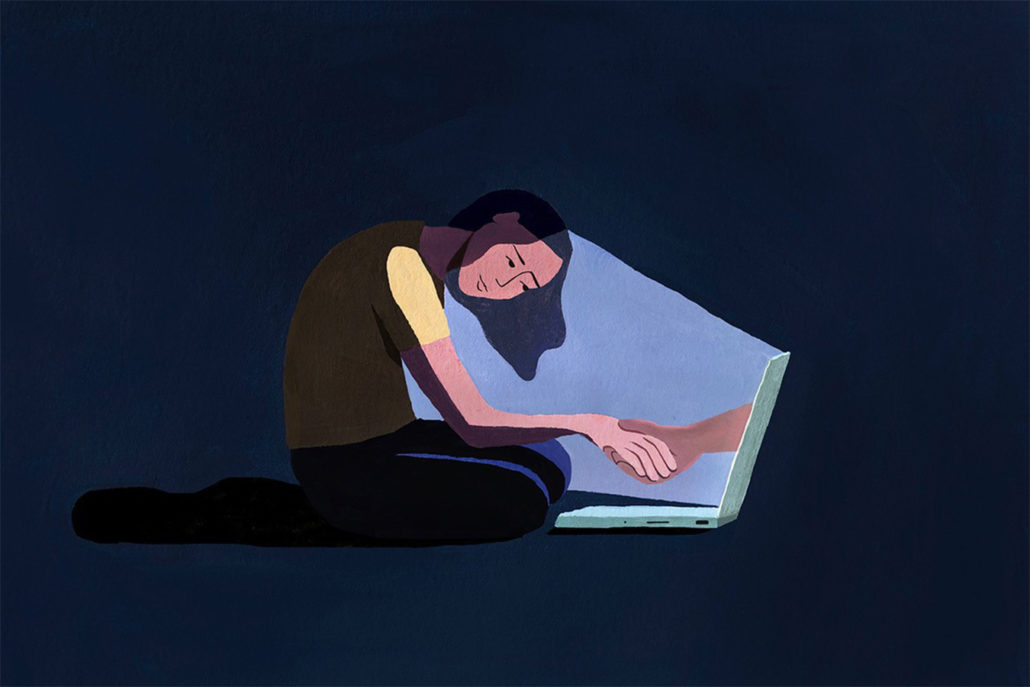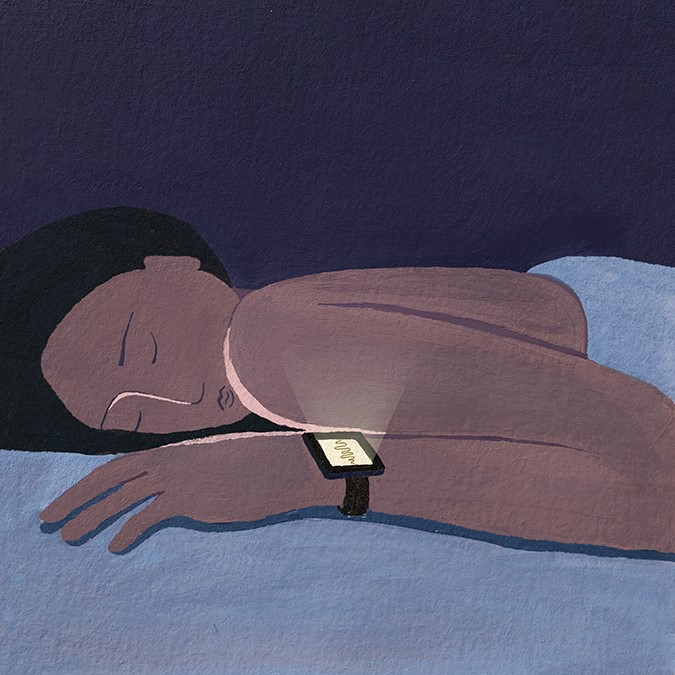
From chat or video counselling to self-help apps, these high-tech solutions can help you through hard times
The chest pains began after I was laid off from a job I’d desperately wanted to leave. Regular and often debilitating, they prompted a trip to the emergency room where, thankfully, I learned I wasn’t having a heart attack. Later, my family doctor diagnosed me with anxiety. However positive I believed it to be, my major life change was stressing me out — and I needed help.
I’d used psychotherapy before to get through difficult moments. But this time I saw an opportunity to explore some techy tools to supplement my weekly therapy sessions. By using a few key apps that use a mixture of cognitive behavioural therapy (CBT) techniques and meditation, I was able to get a grip on my anxiety faster. It’s a regimen I still use regularly, even though my symptoms are in check now, and it has been a lifesaver.
In a world where technology gets blamed for a range of mental health issues — from screen-time-related sleep deprivation to depression and anxiety over social media — it’s encouraging to know that tech can actually be part of the solution.
And these solutions are much needed. According to the Canadian Mental Health Association (CMHA), mental illness affects us all, regardless of age, income, education or culture. In fact, 50 percent of the population have or have had a mental illness by age 40. Additionally, nearly half of those who say they have suffered from anxiety or depression have never talked to a doctor about their issues.

While it’s crucial to see a medical professional for persistent mental health symptoms, these tech tools can help with everything from preliminary assessment to coping strategies to crisis intervention.
1. Apps for anxiety and depression
Who they help: People suffering from anxiety, depression or post-traumatic stress disorder (PTSD), as well as those not yet ready to explore medical help or in need of tools to help support a broader therapy regimen.
How they work: These apps use a variety of methods and tools, from CBT to mood tracking to mental health assessments. Moodpath, for instance, uses daily mood-tracking questions about your thoughts and feelings, three times a day over a two-week period, to screen you for symptoms of anxiety and depression. It then creates an electronic document that you can share with your doctor and offers you access to a library of 150 CBT-based videos and exercises.
Options to try: Anxiety Canada’s Mindshift CBT app targets people with mild to moderate anxiety and leans more heavily on CBT methods to help users understand and manage things like panic, worry, perfectionism, phobias and social anxiety. Tools such as guided meditation, thought journals and a helpful “quick relief” feature are there to help you take a breath, adjust your mood and get grounded, fast.
PTSD Coach Canada was developed by Veterans Affairs Canada and the CMHA to help sufferers manage symptoms after trauma. It offers education and resources for finding professional help, and its assessment tools help identify symptoms. The app also offers daily management tools and techniques such as mindfulness, meditation and soothing ambient sounds to use as needed.
2. Apps for relaxation, sleep and positive thinking
Who they help: Busy people feeling overwhelmed at work, those seeking help relaxing or falling asleep, and anyone wanting to improve their outlook on life.
How they work: The value of a good night’s sleep can’t be overstated. While Americans and Canadians in general are notoriously sleep deprived, a Harvard study recently revealed that sleep problems are particularly common in people with anxiety and depression. Luckily there are apps that can help.
Options to try: Calm is a wildly popular app that helps with relaxation, focus and sleep with a broad range of guided meditations, sleep-inducing music and even bedtime stories read by celebs like Matthew McConaughey (alright, alright, alright).
Sleep Cycle helps ensure you’re getting the most out of your bedtime, tracking your sleep patterns by monitoring your sounds to determine your sleep phases (light, deep, REM). It’ll even buzz your Apple Watch if you’re snoring to get you to roll over, and ensure you wake up at the best possible time by activating the alarm during a light sleep phase.
Once you’re well rested, Happify promises to “conquer your negative thoughts,” change your outlook and help you be happier. After asking questions to assess your happiness levels, the app runs you through daily games and challenges designed to improve your mood, build self-confidence and help you deal with stress.

3. Video counselling
Who it helps: People living in remote areas where it’s hard to access therapists and facilities, individuals with mobility issues, people who travel a lot or have busy schedules, or those who prefer an alternative to face-to-face interactions.
How it works: Several platforms and services based in the GTA and beyond offer access to certified therapists and mental health professionals through video chat, via smartphone apps or web browsers.
Options to try: Inkblot Therapy matches Canadians with qualified counsellors who provide talk therapy and psychotherapy via video chat. While psychotherapy isn’t covered by OHIP, a 30-minute Inkblot session is $37.50, making it one of the more affordable counselling options.
Tranqool offers video-based CBT and counselling online and through an Android app, providing licensed therapists for a range of issues, including anxiety, depression, eating disorders, addiction and more. Each 50-minute session costs $129.95, and Tranqool will send you a receipt immediately afterward for insurance claims.
4. Crisis text support
Who it helps: People in any type of crisis, whether they are suicidal or grappling with difficult thoughts or feelings.
How it works: The person in distress sends a text message to connect with a trained volunteer or counsellor, who will listen, empathize and help the individual reach a calmer state or access emergency support.
Options to try: Powered by Kids Help Phone, Crisis Text Line is free and operates around the clock to support youth. Send a text and you’re connected with crisis counsellors to chat about what’s troubling you. The conversation ends when both parties feel that the situation has “cooled,” and the subject is in a calm, safe place. Text “HOME” to 686868.
Ontario Online & Text Crisis Services provides help to any Ontarian in distress, struggling or having suicidal thoughts. Still in its soft launch phase, the texting service is available from 2 p.m. to 2 a.m. daily via 258258.